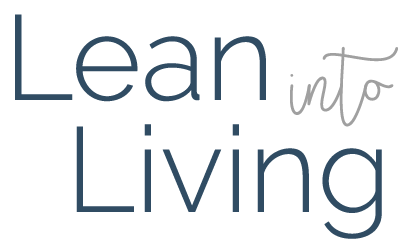Lean is a management method developed by Toyota Motor Company, the car company. In the 1930’s and 40’s, Toyota was searching for a competitive advantage in the car manufacturing industry. The leaders created what is now called the Toyota Production System (TPS) aka "Lean Manufacturing", with wide-spread adoption across several industries from manufacturing to healthcare, construction, government, retail, service, and now into people’s homes. The principles behind Lean are easily transferable and adaptable to any area of life.
At the foundation of Lean is the desire to add value to the customer’s experience by identifying and eliminating waste. In the home, anyone who resides or works in the home (parents, roommates, kids, animals, etc) can be considered the customer.
What do you value and wish you could experience more of in life? Time? Ease? Quality time with your family? Energy and space to connect with your partner? Alone time? Waste-filled processes are what is robbing you of these opportunities.
Lean Principles
All of the Lean Principles aim at adding value to your home or your customer's experience. The magic of Lean exists in the application of these principles, everyone wins; customers, employees, families, and business owners.
Eliminate Waste:
Here are a few of the effects of “waste” on our lives:
1. Lost Time
2. Lost Money
3. Increases Stress on Household Members (endless list of negative physical effects of stress)
4. Drains Energy
5. Strains Relationships
6. Decreases Productivity
7. Causes Mental Fog, Forgetfulness, and Inability to Concentrate
8. Threatens Happiness by Compounding Feelings of Sadness, Anger, and Depression
Click here to learn about the 8 Wastes
Respect People:
At Toyota they say, "Be tough on the process, easy on the people". If something goes wrong with a process, 95% of the time it is due to the system failing, not the person. At Lean Into Living, we help you create systems in your home or business that set YOU up for success!
Value Stream Mapping:
You can't fix what you can't see. This tool allows you to visualize an entire process from start to finish; identify bottlenecks and waste; brainstorm a new process; and then provides a road map to success.
5S:
A systematic way of organizing an environment to ensure easy use and sustainability.
Standard Work:
Set tasks needed to sustain the new systems put in place. The key is that these new standards are created by those who will be doing them, so they have to be easy to integrate into daily living.
Quick Set Up:
All set up is considered waste, because while you are "setting up", someone is waiting. What sorts of tasks can be done beforehand to allow for more ease when the clock is ticking?
Flow:
Prevent bottlenecks and delays from entering a process. The barriers to ease and flow are always some sort of waste.
Kanban:
Incorporate signals and visual cues to keep things moving along smoothly.
Kaizen:
Kaizen is Japanese for "Take-apart and put back together in a better way". The term commonly heard is "continuous improvement".
